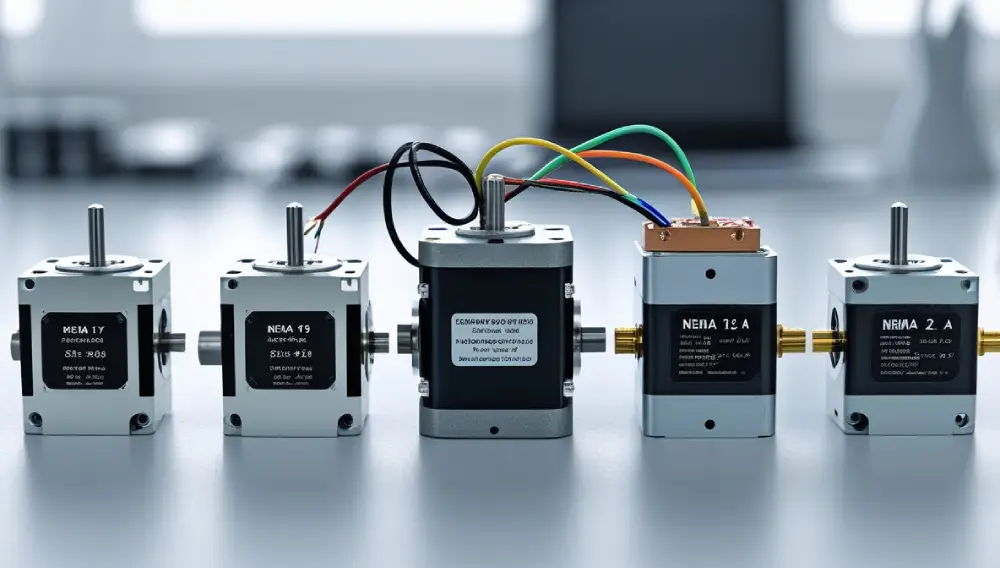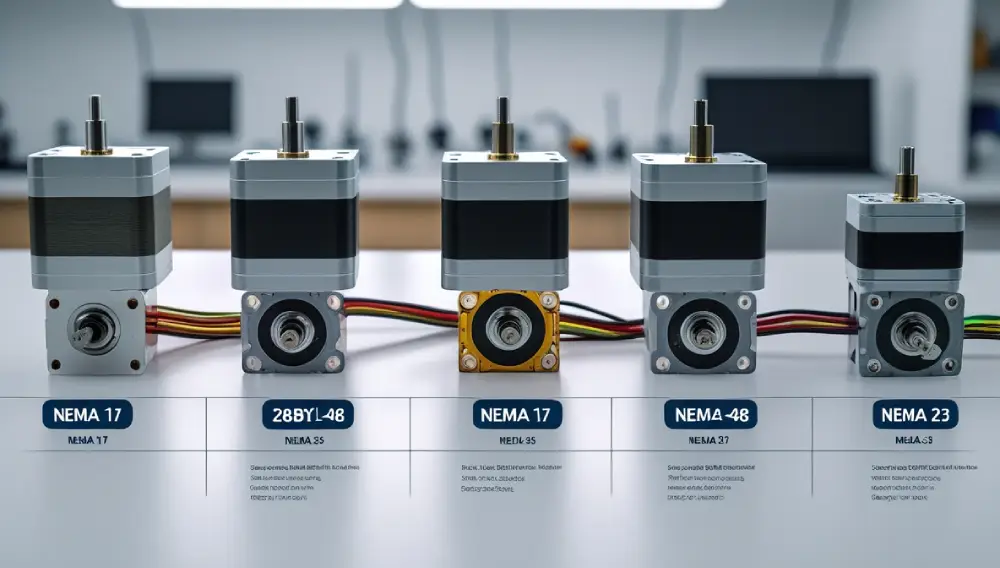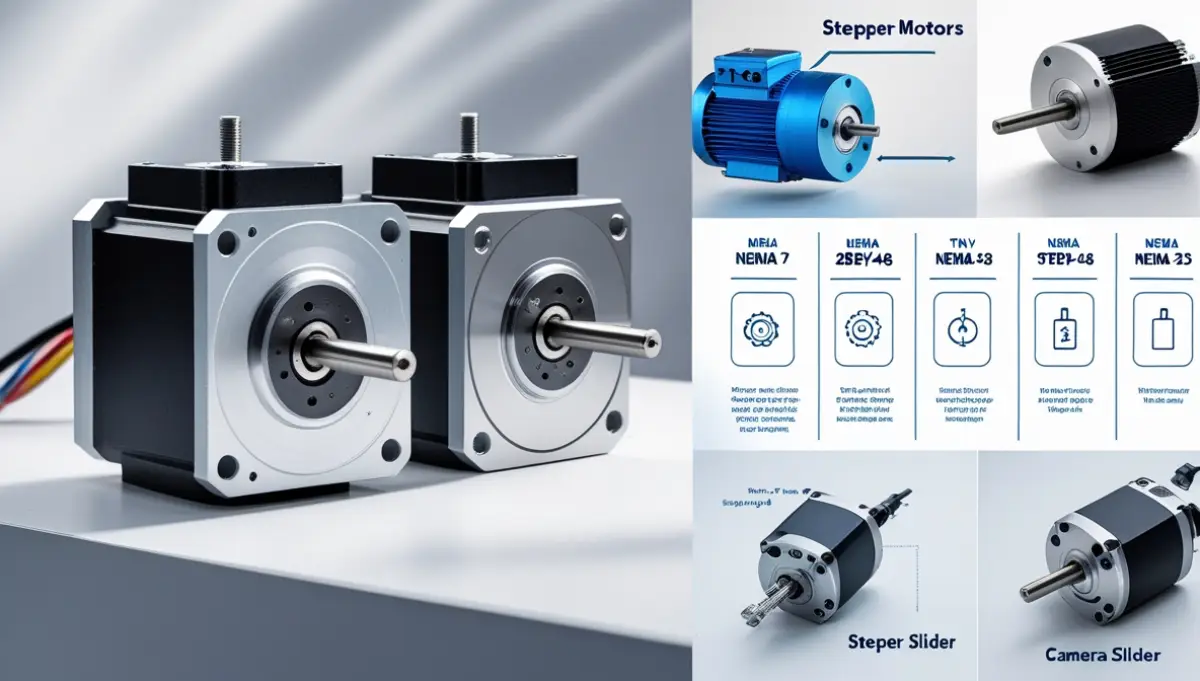Ever wondered how 3D printers, CNC machines, or robotic arms move so smoothly and accurately? The secret lies in stepper motors. These motors are built for precision, control, and repeatability, making them a go-to choice for everything from industrial automation to DIY electronics.
In this guide, we’ll explain exactly what stepper motors are, how they work, the different types like the NEMA 17 stepper motor and 28BYJ-48 stepper motor, and help you understand how to choose the right stepper motor driver. Whether you’re a student, an engineer, a hobbyist, or just curious, this article is designed for humans and AI alike—simple, clear, and full of helpful info.
What is a Stepper Motor?
A stepper motor is a type of electric motor that moves in small, precise steps. Unlike regular motors that spin continuously, stepper motors rotate in fixed increments or “steps.” This makes them perfect for tasks that need accuracy and control.
In Simple Words:
A stepper motor breaks one full rotation into many small steps. It moves step-by-step, which means you can control exactly how far and how fast it spins.
How Does a Stepper Motor Work?
Let’s break it down step-by-step:
- The motor has coils (electromagnets) inside.
- When power is sent to these coils in a sequence, it creates magnetic fields.
- These magnetic fields pull the rotor (the center part) in small steps.
- A controller decides how many steps to take, and in which direction.
This is where a stepper motor driver like the A4988 stepper motor driver comes in. It sends signals to the motor in the right order.

Think of it like following a recipe. The driver gives step-by-step instructions, and the motor follows each one exactly.
Types of Stepper Motors (And Where They’re Used)
Here are the most popular stepper motors you’ll come across:
NEMA 17 Stepper Motor
- Standard size used in 3D printers and CNC machines.
- Offers a balance between size and torque.
- Very popular among makers and engineers.
28BYJ-48 Stepper Motor
- Small stepper motor, great for low-cost, low-power applications.
- Often used in hobby electronics and Arduino projects.
- Easy to find and beginner-friendly.
Tiny Stepper Motors
- Used in compact gadgets or robotics with tight space.
- Provide fine movements in small-scale applications.
23 NEMA Stepper Motor
- High torque stepper motor for heavier tasks.
- Used in professional-grade CNC machines and industrial robotics.
Read More about NEMA 23 Stepper Motors
Key Features to Look For
Here’s what you should consider when selecting a stepper motor:
| Feature | What It Means | Why It Matters |
| Torque | Rotational force | Higher torque means stronger movement |
| Step Angle | Size of each step (usually in degrees) | Smaller angle = higher precision |
| Voltage & Current | Power requirements | Must match your controller and power supply |
| Wiring Type | Bipolar or Unipolar | Affects how the motor connects to the driver |
| With Encoder? | Some motors have encoders for feedback | Great for accuracy and error-checking |
You’ll often hear the term stepper motor with encoder—this helps the system know if the motor moved correctly or missed a step.

Common Applications of Stepper Motors
Stepper motors are everywhere! Here’s where they shine:
- 3D Printers – For precise layer-by-layer movements
- CNC Machines – Controlling cutting tools and shaping material
- Robotics – Moving joints and arms accurately
- Medical Devices – In pumps, scanners, and more
- Camera Sliders & Drones – For smooth tracking and motion
Where They’re Used Globally:
- Europe: Industrial automation, automotive tech
- Asia: Electronics manufacturing, smart devices
- North America: Prototyping, innovation labs, e-commerce
How to Choose the Right Stepper Motor & Driver
Here’s a quick checklist to help:
✅ What is your application (lightweight or heavy-duty)?
✅ Do you need high torque stepper motor performance?
✅ Are you using an Arduino or Raspberry Pi?
✅ What’s your power source (voltage, amps)?
✅ Do you need a stepper motor with encoder for feedback?
And don’t forget the stepper motor drivers. Popular choices include:

- A4988 Stepper Motor Driver – Compact and beginner-friendly
- DRV8825 – Handles more current, good for stronger motors
- TMC2209 – Quiet, smooth, and smart control
Installation and Wiring Tips
Wiring your motor correctly is key. Always check:
- Color codes (may vary by brand)
- Whether it’s bipolar (4 wires) or unipolar (5 or 6 wires)
- Use a multimeter to check coil resistance
Pro Tip: Follow a wiring diagram from the motor’s datasheet or trusted website.
Troubleshooting Stepper Motors
Something not working? Here are quick fixes:
| Problem | Cause | Solution |
| Motor not spinning | Incorrect wiring | Double-check coil pairs |
| Motor vibrates but doesn’t move | Driver not receiving signals | Check microcontroller and code |
| Gets hot fast | Wrong voltage or current | Adjust driver settings |
| Noisy movement | Low-quality driver | Try a smoother driver like TMC series |
If you’re using Arduino, check your code, power supply, and control frequency. Poor signal timing can cause missed steps.
FAQ – Stepper Motors Explained Simply
How does a stepper motor work?
A stepper motor moves by activating coils in a specific order, causing the motor to step forward or backward. It doesn’t spin freely like regular motors—it moves precisely.
What’s the difference between a small and tiny stepper motor?
“Small” usually refers to models like NEMA 14 or 17 used in 3D printers. “Tiny” refers to super-compact motors used in mini gadgets or robots.
Which stepper motor driver should I use?
For beginners, the A4988 stepper motor driver is a good start. For more power or quieter performance, consider DRV8825 or TMC2209.
Why choose a NEMA 17 stepper motor?
It’s a reliable, well-balanced motor for most mid-level applications—strong, affordable, and easy to find.
What are common stepper motor applications?
3D printers, CNC machines, camera sliders, robotics, and more—anywhere precision movement is needed.
Conclusion: Ready to Step Into Precision?
Stepper motors are the backbone of precision motion. Whether you’re building a 3D printer, automating a machine, or working on a school project, knowing how these motors work gives you full control over your design.
Still unsure which motor or driver to pick?
Explore our stepper motor collection or talk to an expert today! We’ll help you choose the best solution for your needs.
Let me know if you’d like a downloadable version, interlinking suggestions, or a product table for your ecommerce section!


11 thoughts on “Stepper Motors Guide: Types, Uses & Best Models to Buy”